
|
|
474th
FIGHTER GROUP
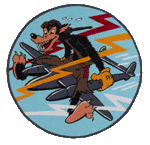
(Version provisoire - en construction)
96 victoires
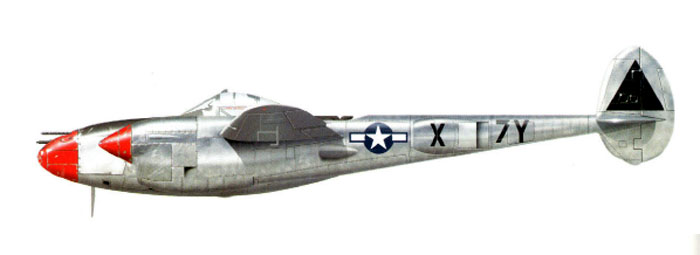 |

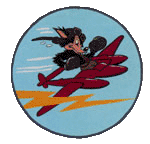
428 Fighter Squadron
(26.66 vict)
| Nom | Grade | Unité | Date | Ennemi | Avion d'arme | TOP | Nbr Vict |
| AUSTIN JAMES C JR | Captain | 428FTR | 08-25-1944 | - | - | European | 2 |
| BOWMAN VERNON L | Major | 428FTR | 07-18-1944 | - | - | European | 1 |
| CONNOLLY FRANCIS J | 1st Lt | 428FTR | 12-18-1944 | - | - | European | 1 |
| CONNOLLY FRANCIS J | 2nd Lt | 428FTR | 10-13-1944 | - | - | European | 0.5 |
| FREEMAN ROBERT L | 2nd Lt | 428FTR | 10-14-1944 | - | - | European | 0.5 |
| GUYON GEORGE G | 1st Lt | 428FTR | 08-25-1944 | - | - | European | 3 |
| HANSON ROBERT D | 1st Lt | 428FTR | 07-18-1944 | - | - | European | 0.33 |
| HECKEL CHARLES C | 2nd Lt | 428FTR | 10-13-1944 | - | - | European | 1 |
| HECKERT JOHN D | 2nd Lt | 428FTR | 09-12-1944 | - | - | European | 1 |
| HOLT RICHARD R | 2nd Lt | 428FTR | 07-18-1944 | - | - | European | 1 |
| HOLT RICHARD R | 2nd Lt | 428FTR | 07-30-1944 | - | - | European | 1 |
| HUSER OLIVER S JR | 2nd Lt | 428FTR | 07-06-1944 | - | - | European | 1 |
| JARVIS WILBUR L III | 2nd Lt | 428FTR | 08-25-1944 | - | - | European | 2 |
| KOZLIK JOHN J | 2nd Lt | 428FTR | 04-03-1945 | - | - | European | 1 |
| MCKITTRICK ROBERT W | Captain | 428FTR | 08-25-1944 | - | - | European | 1 |
| MEIER PAUL R | 2nd Lt | 428FTR | 12-17-1944 | - | - | European | 1 |
| NUCKOLS ERNEST B JR | Captain | 428FTR | 08-25-1944 | - | - | European | 2 |
| PEMBERTON JACK A | 2nd Lt | 428FTR | 10-14-1944 | - | - | European | 0.5 |
| SMITH LUTHER L | 1st Lt | 428FTR | 08-25-1944 | - | - | European | 0.5 |
| SPIKER WILLIAM O | 2nd Lt | 428FTR | 07-18-1944 | - | - | European | 1 |
| SPIKER WILLIAM O | 2nd Lt | 428FTR | 08-25-1944 | - | - | European | 1.5 |
| TRUEBLOOD ROGER W | 1st Lt | 428FTR | 12-05-1944 | - | - | European | 1 |
| TRUEBLOOD ROGER W | 2nd Lt | 428FTR | 09-12-1944 | - | - | European | 1 |
| TRUEBLOOD ROGER W | 2nd Lt | 428FTR | 10-13-1944 | - | - | European | 0.5 |
| ZIERLEIN JEROME J | 2nd Lt | 428FTR | 07-18-1944 | - | - | European | 0.33 |

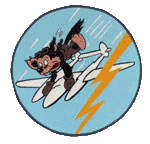
429 Fighter Squadron
(33 vict)
| Nom | Grade | Unité | Date | Ennemi | Avion d'arme | TOP | Nbr Vict |
| AMPHLETT JACK B | Captain | 429FTR | 10-13-1944 | - | - | European | 1 |
| BAILLARGEON ERNEST L | 2nd Lt | 429FTR | 08-25-1944 | - | - | European | 1 |
| BAILLARGEON ERNEST L | 2nd Lt | 429FTR | 09-12-1944 | - | - | European | 1 |
| BANKS WILLIAM H | 1st Lt | 429FTR | 07-06-1944 | - | - | European | 1 |
| CARSON KIT L | 2nd Lt | 429FTR | 08-05-1944 | - | - | European | 1 |
| CASTEL ALFRED B | 2nd Lt | 429FTR | 08-25-1944 | - | - | European | 1 |
| CHAMBERLAIN DENNIS R | 2nd Lt | 429FTR | 07-18-1944 | - | - | European | 1 |
| CHICKERING WILLIAM E JR | 1st Lt | 429FTR | 10-13-1944 | - | - | European | 2 |
| CLARK ROBERT F | 1st Lt | 429FTR | 04-26-1945 | - | - | European | 1 |
| HOLCOMB CHARLES N | Captain | 429FTR | 08-25-1944 | - | - | European | 1 |
| KIRKLAND LENTON F JR | 1st Lt | 429FTR | 10-21-1944 | - | - | European | 1 |
| KIRKLAND LENTON F JR | 1st Lt | 429FTR | 12-18-1944 | - | - | European | 2 |
| KIRKLAND LENTON F JR | 2nd Lt | 429FTR | 08-25-1944 | - | - | European | 2 |
| LANE HERMAN Q | 1st Lt | 429FTR | 08-05-1944 | - | - | European | 1 |
| LANE HERMAN Q | 1st Lt | 429FTR | 08-25-1944 | - | - | European | 2 |
| LEAHY JAMES E | 2nd Lt | 429FTR | 08-25-1944 | - | - | European | 1 |
| LOVELESS GENE F | 2nd Lt | 429FTR | 10-13-1944 | - | - | European | 1 |
| MCPHERSON DALLAS E | 1st Lt | 429FTR | 07-18-1944 | - | - | European | 1 |
| MILLER JOSEPH E JR | Captain | 429FTR | 03-13-1945 | - | - | European | 1 |
| MILLIKEN ROBERT C | 1st Lt | 429FTR | 10-13-1944 | - | - | European | 1 |
| MILLIKEN ROBERT C | 1st Lt | 429FTR | 12-18-1944 | - | - | European | 1 |
| MILLIKEN ROBERT C | 2nd Lt | 429FTR | 07-06-1944 | - | - | European | 1 |
| MILLIKEN ROBERT C | 2nd Lt | 429FTR | 09-12-1944 | - | - | European | 2 |
| PARKER ROBERT F | 1st Lt | 429FTR | 08-25-1944 | - | - | European | 1 |
| PERKINS LEROY R | 2nd Lt | 429FTR | 04-26-1945 | - | - | European | 1 |
| ROSS DONAL K | 1st Lt | 429FTR | 04-26-1945 | - | - | European | 1 |
| STEIN RICHARD | 2nd Lt | 429FTR | 09-12-1944 | - | - | European | 1 |
| SWIFT KENNETH L | 2nd Lt | 429FTR | 05-08-1945 | - | - | European | 1 |

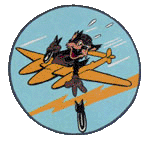
430 Fighter Squadron
(30.83 vict)
| Nom | Grade | Unité | Date | Ennemi | Avion d'arme | TOP | Nbr Vict |
| ACKLEY JOHN W | 1st Lt | 430FTR | 12-17-1944 | - | - | European | 2 |
| ACKLEY JOHN W | 1st Lt | 430FTR | 12-18-1944 | - | - | European | 0.5 |
| BLACKMAN THOMAS A | 1st Lt | 430FTR | 12-17-1944 | - | - | European | 2 |
| BLUM KENNETH V | 1st Lt | 430FTR | 12-18-1944 | - | - | European | 1.5 |
| BYERS JAMES F * | 1st Lt | 430FTR | 12-17-1944 | - | - | European | 1 |
| BYERS JAMES F * | 1st Lt | 430FTR | 12-18-1944 | - | - | European | 1 |
| BYERS WILLIAM E | 1st Lt | 430FTR | 10-12-1944 | - | - | European | 1 |
| BYERS WILLIAM E | 1st Lt | 430FTR | 10-13-1944 | - | - | European | 1 |
| CARSTEN ERNEST M | 2nd Lt | 430FTR | 07-18-1944 | - | - | European | 0.33 |
| CHRISTIAN ROBERT W JR | 2nd Lt | 430FTR | 12-18-1944 | - | - | European | 2 |
| CUMBIE LYNWOOD W | 1st Lt | 430FTR | 07-18-1944 | - | - | European | 1 |
| ELLIS STANLEY H | 1st Lt | 430FTR | 10-13-1944 | - | - | European | 1 |
| FOX CLYDE | 1st Lt | 430FTR | 07-18-1944 | - | - | European | 1 |
| FOX CLYDE | Captain | 430FTR | 03-13-1945 | - | - | European | 1 |
| HAGGARD JACK W | 2nd Lt | 430FTR | 12-18-1944 | - | - | European | 1 |
| HATCH JOHN E JR | Captain | 430FTR | 12-17-1944 | - | - | European | 1 |
| HATCH JOHN E JR | Captain | 430FTR | 12-24-1944 | - | - | European | 0.5 |
| HENDERSON JACK J | 1st Lt | 430FTR | 11-18-1944 | - | - | European | 1 |
| HENDERSON JACK J | 1st Lt | 430FTR | 12-24-1944 | - | - | European | 1 |
| HICKOK GENE G | 1st Lt | 430FTR | 12-17-1944 | - | - | European | 1 |
| JEFFCOTE RUFUS A | 2nd Lt | 430FTR | 12-17-1944 | - | - | European | 2 |
| JONES EDWARD C | 1st Lt | 430FTR | 03-13-1945 | - | - | European | 1 |
| JONES EDWARD C | 2nd Lt | 430FTR | 12-18-1944 | - | - | European | 0.5 |
| JONES KENNARD K A | 2nd Lt | 430FTR | 12-17-1944 | - | - | European | 0.5 |
| MCKEEVER WENDALL E | 1st Lt | 430FTR | 12-24-1944 | - | - | European | 0.5 |
| OGGER HAROLD R | 1st Lt | 430FTR | 03-13-1945 | - | - | European | 1 |
| PAYNTER CHARLES J | 1st Lt | 430FTR | 12-17-1944 | - | - | European | 0.5 |
| RINN FRANK B | 1st Lt | 430FTR | 05-08-1945 | - | - | European | 1 |
| SCHNEIDER WESLEY | 1st Lt | 430FTR | 04-18-1945 | - | - | European | 1 |
| SHOEMAKER ROBERT S | 1st Lt | 430FTR | 10-13-1944 | - | - | European | 1 |
|
The decision to invade North Africa in November
1942 was not made until the middle of August, 1942. Forces available
for this difficult operation were minimal—it becoming necessary
for the USAAF Eighth Air Force to withdraw most of the combat
groups that had reached England by that time from an embryonic
bombing campaign over Europe to take part in the battle for control
of Northwest Africa.
Export versions of the P-39 originally ordered for the French Air Force in early 1940 had, after the fall of France in May 1940, been sent in several shipments to the RAF beginning in early 1941 to augment the RAF’s fighter force after the Battle of Britain. However, after Hitler turned his attention to the East, the pressure was off the RAF and it had fielded only one P-39 unit (601Sq) in 1941. The other P-39s remained in storage in the crates in which they had arrived. At the same time, by the summer of 1942 the number of American pilot volunteers in the RAF serving in England had grown to a few hundred in number. In urgent need of additional fighters to support the forthcoming invasion, American planners decided to combine these two assets already in England and at the end of September 1942 the American pilots in the RAF were invited to transfer to the USAAF. On 1 October, a number of pilots from the USAAF 31st and 52nd Fighter Groups, who had flown P-39s in the US prior to there arrival in England in June of 42, were ordered to report to RAF Station Duxford England to help activate a new Group, designated as the 350th Fighter Group with three subordinate Squadrons, the 345th, 346th and 347th . (The American Eagle Squadrons were re-designated the 4th Fighter Group about this time but the 350th was the only Group activated from scratch in Europe,in WW II). At the same time, some of the American pilots who had just transferred from the RAF were ordered to the new Group to make up the other half of the original aircrew roster. Although the pilots were not advised of their mission at the time, for security reasons, the plan was for the Group to fly to North Africa six weeks after activation, which was one week after the scheduled invasion of North Africa on 8 November, 1942. The ex RAF pilots had been flying Hurricanes or Spitfires while the ex 31st and 52nd Group pilots had been flying RAF Spitfires with which they had been equipped on their arrival in England, 4 months earlier. As it turned out, the RAF Depot responsible for supporting the operation was completely over committed and could not uncrate and assemble the Group’s P-39 aircraft in time to meet the invasion plan. Airacobras did finally begin arriving in numbers, in mid December, and two weeks later the pilots began flying to North Africa. In the middle of the English winter, many of the ex RAF pilots managed to acquired only some 20 hours of flying time in the new aircraft type by the time they launched for Africa. The Group’s 75 pilots flew their P-39Ls (346 Sq) and P-39-400 (345 Sq and 347 Sq) fighters from RAF Stations Portreath and Predannack, on Land-Ends, England, to Port Lyautey, French Morocco, during the period 3 Jan to 28 Feb 1943. Sixty one arrived at the destination airfield. Ten pilots that encountered head winds, instead of the forecast tail wind (the only fuel reserve on the 1200 mile, six to seven hour over water flight) were forced to land in Portugal where they were interned. One more landed in Portugal after losing all electrical systems. One flight that broke up in a severe line squall over the Bay of Biscay lost one pilot, (KIA)—he was flying alone, probably still on the deck, at max range cruise settings (165 to 175 MPH), when he was likely ambushed, and was shot down by a patrolling Ju-88 pilot of KG-40 who claimed the kill; one pilot, after closing on the French coast to determine his location, ended up short of fuel and crash landed in Spain , where he was interned; another pilot on that flight became lost and crash landed in Ireland while attempting to return to England. The first elements of the Air Echelon , and the Ground Echelon, finally joined each other at Oujda, French Morocco, a few days after their arrival in North Africa on 3 January 1943. The Ground Echelon had arrived off North Africa in the first week of November 1942 from the USA with the Operation “Torch” invasion fleet. The Group began air defense operations along the North African coast a few days after its ground and air elements came together. One month after its first flight arrived in Africa it began its first offensive combat missions, over Tunisia. The Group flew air defense and fighter- bomber missions with its P-39s and primarily fighter bomber missions with its P-47s. Also, from June to Sept 1943 each Squadron was assigned two P-38s to intercept and destroy high flying Luftwaffe reconnaissance aircraft sent to photograph the allied invasion fleet gathering along the North African coast for the invasion of Sicily. The First Brazilian Fighter Squadron joined the 350th Group as a fourth Squadron in October 1944. The Group’s American Squadrons flew over 37,000 sorties during the war, some 16,600 defensive and more than 20,000 offensive sorties. The 1st Brazilian Fighter Squadron flew an additional 2,546 offensive sorties. Of the totals, most of the defensive sorties were flown in the P-39 Airacobras and P-38 Lightnings while most of its offensive sorties were flown in the P-47 Thunderbolts. However, some 3,850 offensive sorties , from strafing and bombing attacks to fighter sweeps and a few bomber escort missions were flown in the P-39s, while some 700 defensive sorties were flown in the Group’s P-47s. The Group lost 95 pilots, KIA or killed in flying
accidents, eight of these being Brazilian pilots. Twenty two pilots
became POWs, 5 of whom were Brazilians. Another 25 pilots were
downed on offensive missions but either evaded capture in enemy
territory, or, bailed out over or crashed landed on, allied territory;
five of these being Brazilian pilots. At least 16 pilots were
wounded in action but managed to land at home base or on another
allied airfield. Three of these were Brazilian pilots. Thirteen
pilots were interned in ‘neutral’ countries. All were
permitted to proceed (incognito, in civilian clothes) to Gibraltar,
some three months later. Approximately one third of all the American
pilots who served in the Group fell into one of the above categories.
Approximately 44 percent of the Brazilian pilots who flew missions
fell into one of the above categories. However, the Group’s
pilots were able to return and land with flak damaged aircraft
on almost seven hundred occasions. On the other side of the ledger,
the Group’s pilots dropped over 7,000 tons of bombs and fired
over 30 million rounds of ammunition in the destruction of enemy
targets. |
|
Air Forced Assigned To : 9th AF (March 1944) Moreton, England, 12 Mar 1944; Air Offensive, Europe Distinguished Unit Citation: France, 23 Aug 1944 Destroyed : 96 Probable : 24 Damaged : 54 Aces were : (scores in the group/squadron) 429th FS L.F. Kirkland (5) |
Source :
STARS & BARS - Frank Olynyk - Grub Street Editions
http://afhra.maxwell.af.mil/index.asp
http://www.web-birds.com/